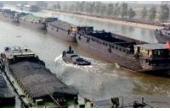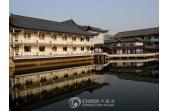Yangzhou, on the other bank of Yangtze River, emerged during the
Spring and Autumn Period (770-476 B.C.) when Fu Chai,king of the Wu
State, built his defence system, Eventually it grew into a large,
population city. Emperor Yangdi of the Sui Dynasty (581-618)
visited prostitutes here; emperors Huizong and Gaozong of the Song
Dynasty (960-1279) built their temporary palaces here, and Qing
Emperor Qianlong visited six times.
The city itself is a museum of Chinese culture and a beautiful
Chinese garden. Small and quite as it is, you have an easy access
to all latest modern convenience here, too, while enjoying
traditional heritage. Through all the ages, scholars and poets have
lavishly praised Yangzhou in prose and poetry, pouring their love
and yearning for this city in the most beautiful language. This is
the only city in China that receives such an honour and it
deserves, too.
The city was founded by the 4th century BC, with its oldest known
name being Kuang-ling. Its first location was east of the present
site. In 590 AD, Kuang-ling began to be called Yangzhou, which was
the traditional name of the entire southeastern part of China.
Beginning in the 7th century, Yangzhou was the chief commercial
city of the Yangtze area, due to its importance as a canal port,
seaport, and administrative center.
For westerners, an interesting footnote to Yangzhou's history is
that Marco Polo served there under the Mongol emperor Kubilai Khan,
in the period around 1282-1287.











